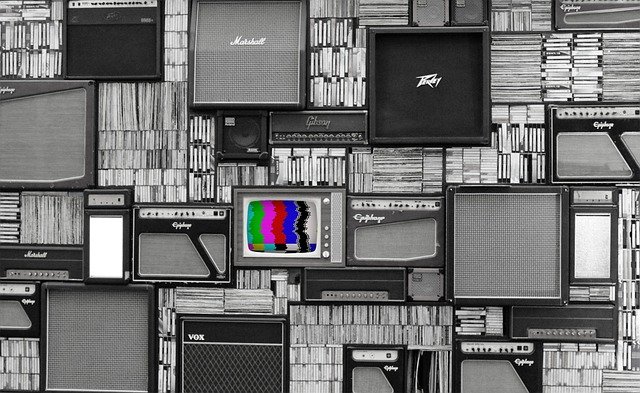In today’s technologically advanced society, our everyday devices have transformed into smart gadgets, offering a world of convenience and entertainment at our fingertips. A notable highlight of this digital revolution is the smart TV, a product born from innovative TV app development services. However, like the two sides of a coin, the impressive capabilities of a smart TV also come with certain vulnerabilities.
Smart TVs have opened up a new frontier of digital entertainment, allowing us to stream our favorite shows, engage in interactive gaming, and even participate in video conferences. But with such a vast array of functionalities, they have also become an attractive target for cybercriminals. Connected to the internet, these devices are susceptible to malware attacks, hacking attempts, and privacy breaches.
Can a Smart TV Be Hacked?
Absolutely. Just as with any other internet-connected device, a smart TV can fall prey to skilled hackers or organized cybercriminal groups. As smart TVs increasingly become integrated into our daily lives, cybercriminals are honing their strategies to exploit any vulnerabilities they can find.
These unscrupulous individuals target smart TVs to gain unauthorized access to sensitive data, such as your credit card details, passwords, and even your personal photographs. Remember, any Internet of Things (IoT) device, such as your smart TV, is a potential entry point for hackers. Even more worrying is that while you’re absorbed in your favorite show, you might not realize that you’re under a cyber attack.
For a more comprehensive understanding of the IoT landscape and its associated risks, refer to this article from CSO Online. Awareness is your first line of defense.

Signs Your Smart TV Is Hacked or Infected
Recognizing the signs of a potential breach is the key to mitigating any damage swiftly. If your smart TV displays the following symptoms, it may have fallen victim to a cyberattack:
- Unexpected pop-up ads or messages: Sudden, intrusive pop-up ads can indicate malware activity. If you observe unexpected messages or pop-ups, proceed with caution.
- Unresponsive remote control: A malware-infected smart TV may render your remote control unresponsive, affecting your ability to control the device.
- Slow performance: Similar to a computer, your smart TV may start lagging or become sluggish if it’s infected by malware, which can overburden its processing capabilities.
- Unusual network activity: Any unexpected spikes in your network traffic could be a sign that your device has been compromised.
- Unrecognizable applications: Spotting apps that you didn’t install could signal that your smart TV has been hacked and unwanted software has been added.
- Changes in settings without your knowledge: Altered settings, such as a new background or language, may suggest unauthorized access to your smart TV.
Knowledge of these symptoms arms you with the ability to act swiftly, mitigating further security breaches.
1. Keep Software or Firmware Updated
One of the most straightforward yet effective ways to safeguard your smart TV is by keeping its software and firmware updated. Many users often ignore these updates, not realizing that they contain crucial security patches for known vulnerabilities. Thus, treating your smart TV’s updates with the same importance as those of your smartphones and computers can greatly enhance its protection.
2. Secure Your Wi-Fi Router
Your Wi-Fi router is the gateway for your smart TV and other devices to access the internet. Consequently, a secure router translates to a safer smart TV. Employ strong passwords, multi-factor authentication, and consider installing a virtual private network (VPN) on your router. A VPN encrypts your data, making it harder for potential hackers to intercept it, thereby providing an additional layer of security.
3. Use a Secure Network
Using a secure network is vital when setting up your smart TV. Ensure you choose a reputable Internet Service Provider (ISP) and that your network employs strong encryption methods like WPA2. This can help guard your data against malicious actors looking to exploit weak network security.
4. Activate the TV’s Firewall
Modern smart TVs are designed with advanced security features to ensure maximum protection, one of which is a built-in firewall. A firewall acts as a barrier between your device and potential cyber threats, blocking unauthorized access while permitting outbound communication. It’s like a digital bodyguard for your smart TV, making it significantly harder for hackers to breach your device’s defenses.
Activating your TV’s firewall can be as simple as following these general steps:
- Access the Settings Menu: Navigate through your smart TV’s menu until you find the settings or options tab.
- Look for the Security Settings: Within this menu, you’ll likely find a tab related to security, privacy, or network settings.
- Activate the Firewall: Within the security settings, locate the firewall option. If it’s not already activated, turn it on.
Remember, these steps might differ slightly depending on the make and model of your smart TV. For specific instructions, refer to your TV’s user manual or contact the manufacturer’s customer support.
By keeping the firewall activated, you add an extra layer of protection, ensuring your device’s immunity against malicious software and cyber threats. This is a critical step towards securing your smart TV and should not be overlooked.
5. Disable Automatic Connections
Automatic connections might offer convenience, but they also pose potential security risks. When setting up your smart TV, consider disabling this feature. This action can help prevent unauthorized devices from connecting to your smart TV without your knowledge, offering you more control over your device’s connections.
6. Set a PIN or Password for Your Smart TV
Much like your smartphone, most smart TVs offer an option to set a PIN code or password. This adds an extra layer of protection, preventing unauthorized users from accessing your device. Ensure you periodically update this PIN or password and avoid sharing it with others to maintain your smart TV’s security.
7. Be Careful With Unknown Sources
When you’re downloading apps or streaming content, it’s crucial to be cautious about the sources. Download applications only from trusted sources, and avoid clicking on suspicious links or downloading files from unverified or sketchy websites. This extra vigilance can protect your smart TV from malware infections that could potentially compromise your device.
8. Avoid Connecting Unsecured Devices
Another best practice for securing your smart TV involves being wary of what you connect to it. Devices like USB drives could be infected with malware, which could then be transferred to your smart TV. As a rule of thumb, avoid connecting any device to your smart TV that you aren’t confident is secure.
9. Be Wary of Unsolicited Pop-Ups
When you receive unsolicited pop-ups on your smart TV, it’s best to approach with suspicion. These could be ploys to install malicious software or gain access to your personal information. Always verify the source of these messages before responding or taking any action.
10. Limit Access to Your Smart TV
Your smart TV likely comes with the option to connect other devices wirelessly. To add an extra level of protection, limit who has access to this feature. You could set up user accounts and passwords so only those you trust have access to your TV. Always check the security measures on the devices you do connect to ensure they are safe and updated.
11. Disable Unused Features
Modern smart TVs come loaded with a variety of features, many of which you might not use regularly. It’s a good idea to disable these unused features, reducing potential points of exploitation for hackers. Turning off unnecessary services limits the attack surface of your smart TV, providing fewer opportunities for malicious actors to gain access. For a more detailed insight on managing your smart TV settings, you can refer to this guide on Consumer Reports.
12. Monitor Your Smart TV Activity
Regular monitoring of your smart TV’s activity is another way to identify potential threats. Keep an eye out for unusual behavior such as unexpected network activity or changes in settings. Promptly acting on anything out of the ordinary can help keep your smart TV secure.
13. Cover the Webcam of Your Smart TV
Your smart TV’s webcam can potentially be exploited for malicious purposes if it falls into the wrong hands. Therefore, it’s advisable to cover the webcam when you’re not using it. This simple measure can thwart any attempts from unauthorized individuals trying to spy on your activities through your TV.
14. Don’t Allow Data Gathering
Many smart TVs are capable of collecting data about you and your viewing habits. While this feature might improve your viewing experience by providing personalized content, it might also expose you to privacy risks. Ensure you limit this data gathering by turning off any such features. This step can help protect your personal information from being used without your consent.
15. Restrict Always-On Access by Microphones or Cameras
If your smart TV is equipped with a microphone or camera, it’s crucial to restrict their always-on access. This measure can prevent malicious actors from eavesdropping on your conversations or using the camera for nefarious purposes.
Conclusion:
Our smart TVs serve as a gateway to a world of digital entertainment. However, they can also be potential targets for cyber threats. Protecting your smart TV from such attacks is critical not only to safeguard your device but also to secure your personal information and data.
While no technology is impenetrable, taking preventive measures can significantly mitigate the risks. By implementing the steps discussed in this guide, from updating your software regularly to disabling unused features, you can strengthen your smart TV’s defenses against cyber threats.











FIND US ON SOCIALS